 W
WThe tube-lipped nectar bat is a bat from Ecuador. It was described in 2005. It has a remarkably long tongue, which it uses to drink nectar. It additionally consumes pollen and insects.
 W
WThe Arunachal macaque is a macaque native to Arunachal Pradesh in North-east India. It is listed as Endangered on the IUCN Red List. It was scientifically described in 2005.
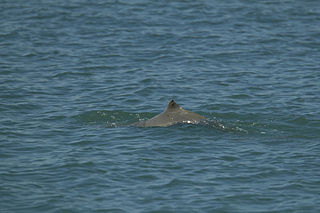 W
WThe Australian snubfin dolphin is a dolphin found off the northern coasts of Australia. It closely resembles the Irrawaddy dolphin and was not described as a separate species until 2005. The closest relative to the genus Orcaella is the killer whale, Orcinus orca. The Australian snubfin has three colors on its skin, while the Irrawaddy dolphin only has two. The skull and the fins also show minor differences between the two species.
 W
WThe Bemaraha woolly lemur, also known as Cleese's woolly lemur, is a species of woolly lemur native to western Madagascar, named after John Cleese. The first scientist to discover the species named it after Cleese, star of Monty Python, mainly because of Cleese's fondness for lemurs, as shown in Operation Lemur With John Cleese and Fierce Creatures, and his efforts at protecting and preserving them. The species was first recorded in 1990 by a team of scientists from Zurich University led by Urs Thalmann, but wasn't formally described as a species until November 11, 2005.
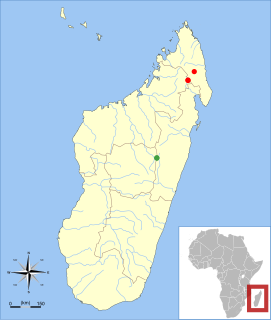 W
WThe eastern voalavo is a rodent in the family Nesomyidae which occurs in the Anjozorobe forest of eastern Madagascar. Although surveys before 2002 failed to record the species, it is common in some places. However, it is threatened by habitat loss because of slash-and-burn agriculture. The species was formally described in 2005 and is most closely related to the only other species of Voalavo, the northern voalavo from northern Madagascar.
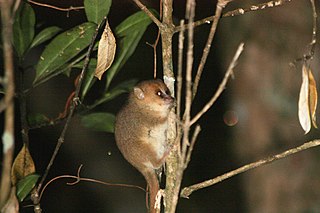 W
WGoodman's mouse lemur is a species of mouse lemur from the region near Andasibe in eastern Madagascar. The species is named in honor of primatologist Steven M. Goodman. "Lehilahytsara" is a combination of the Malagasy words which mean "good" and "man". The finding was presented August 10, 2005, along with the discovery of the northern giant mouse lemur as a separate species.
 W
WThe greater monkey-faced bat, is a megabat endemic to Solomon Islands, Bougainville, in Papua New Guinea, and nearby small islands. It is listed as a critically endangered species and the population is decreasing. It is the largest monkey-faced bat.
 W
WHarrison's tube-nosed bat is a species of vesper bats (Vespertilionidae). Within the genus Murina, it belongs to the so-called 'cyclotis-group'.
 W
WThe kipunji, also known as the highland mangabey, is a species of Old World monkey that lives in the highland forests of Tanzania. The kipunji has a unique call, described as a 'honk-bark', which distinguishes it from its close relatives, the grey-cheeked mangabey and the black crested mangabey, whose calls are described as 'whoop-gobbles'. Though it was originally thought to be a member of the Lophocebus genus genetic data later placed it as its own separate genus Rungwecebus. The kipunji is the first new monkey genus to be discovered since Allen's swamp monkey in 1923.
 W
WThe Laotian rock rat or kha-nyou, sometimes called the "rat-squirrel", is a species of rodent found in the Khammouan region of Laos. The species was first described in a 2005 article by Paulina Jenkins and coauthors, who considered the animal to be so distinct from all living rodents, they placed it in a new family, Laonastidae. It is in the monotypic genus Laonastes.
 W
WThe Laotian rock rat or kha-nyou, sometimes called the "rat-squirrel", is a species of rodent found in the Khammouan region of Laos. The species was first described in a 2005 article by Paulina Jenkins and coauthors, who considered the animal to be so distinct from all living rodents, they placed it in a new family, Laonastidae. It is in the monotypic genus Laonastes.
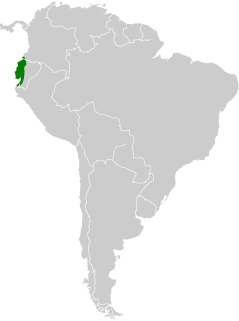 W
WThe Matapalo broad-nosed bat, Platyrrhinus matapalensis, is a species of leaf-nosed bat described in 2005. It is found in South America.
 W
WThe northern giant mouse lemur, or northern dwarf lemur, is a species of lemur discovered in 2005. They are part of the primate order, and classified in the family Cheirogaleidae. Previously, both populations of giant mouse lemurs were believed to belong to one species. The northern giant mouse lemurs are small nocturnal lemurs endemic to Madagascar. They weigh about 300 grams (11 oz), and have long, bushy tails and relatively small ears. Their large testicles are an indication of their promiscuous copulation system. These lemurs have been found to use communal sleeping nests including multiple males, which is an uncommon behaviour in lemurs.
 W
WOrcés’s long-tongued bat is a species of leaf-nosed bat found in Ecuador.
 W
WPetter's big-footed mouse, is a Madagascan rodent in the genus Macrotarsomys. With a head and body length of 150 mm (5.9 in) and body mass of 105 g (3.7 oz), It is the largest species of its genus. The upperparts are brown, darkest in the middle of the back, and the underparts are white to yellowish. The animal has long whiskers, short forelimbs, and long hindfeet. The tail ends in a prominent tuft of long, light hairs. The skull is robust and the molars are low-crowned and cuspidate.
 W
WPlatyrrhinus albericoi is a species of leaf-nosed bat found in South America.
 W
WPlatyrrhinus ismaeli is a species of bat found in South America.
 W
WThe greater monkey-faced bat, is a megabat endemic to Solomon Islands, Bougainville, in Papua New Guinea, and nearby small islands. It is listed as a critically endangered species and the population is decreasing. It is the largest monkey-faced bat.
 W
WThe Qinling panda is a subspecies of the giant panda, discovered in the 1960s but not recognized as a subspecies until 2005. Disregarding the nominate subspecies, it is the first giant panda subspecies to be recognized.
 W
WSaxatilomys paulinae is a species of murid rodent native to central Laos and Vietnam, separated to a monotypic genus Saxatilomys. It was first discovered in the Khammouan Limestone National Biodiversity Conservation Area in Khammouan Province, Laos, and also been found in the Vietnamese province of Quang Bình. It is the only known species in the genus Saxatilomys. The genus name is derived from the Latin saxatilis, meaning "among the rocks" and the Greek mys, meaning mouse or rat.
 W
WThe western yellow bat is a species of vesper bat endemic to Madagascar.
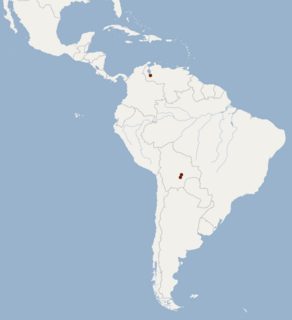 W
WSoriano's yellow-shouldered bat, is an extant species of leaf-nosed bat indigenous to Bolivia and Venezuela, although its precise distribution is uncertain. Following the postulation of the species in 2005, S. sorianoi requires contemporary information relating its distribution, environment, and population, along with formal a comparison with S. erythromos and S. bogotensis. Without sufficient data, the International Union for Conservation of Nature (IUCN) presently considers the taxonomy for S. sorianoi as incomplete.
 W
WSoriano's yellow-shouldered bat, is an extant species of leaf-nosed bat indigenous to Bolivia and Venezuela, although its precise distribution is uncertain. Following the postulation of the species in 2005, S. sorianoi requires contemporary information relating its distribution, environment, and population, along with formal a comparison with S. erythromos and S. bogotensis. Without sufficient data, the International Union for Conservation of Nature (IUCN) presently considers the taxonomy for S. sorianoi as incomplete.
 W
WThe tube-lipped nectar bat is a bat from Ecuador. It was described in 2005. It has a remarkably long tongue, which it uses to drink nectar. It additionally consumes pollen and insects.
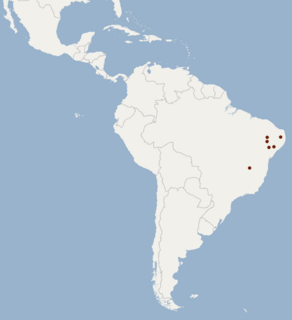 W
WVieira's long-tongued bat is a species of bat from northeastern Brazil, discovered in 2005 by Gregorin and Ditchfield. It is the only species in the genus Xeronycteris.
 W
WVieira's long-tongued bat is a species of bat from northeastern Brazil, discovered in 2005 by Gregorin and Ditchfield. It is the only species in the genus Xeronycteris.
 W
WThe yellow-striped chevrotain is a species of chevrotain described in 2005. It is found in the wet zones of Sri Lanka. It was recognized as a species distinct from Moschiola meminna based on the phylogenetic species concept.